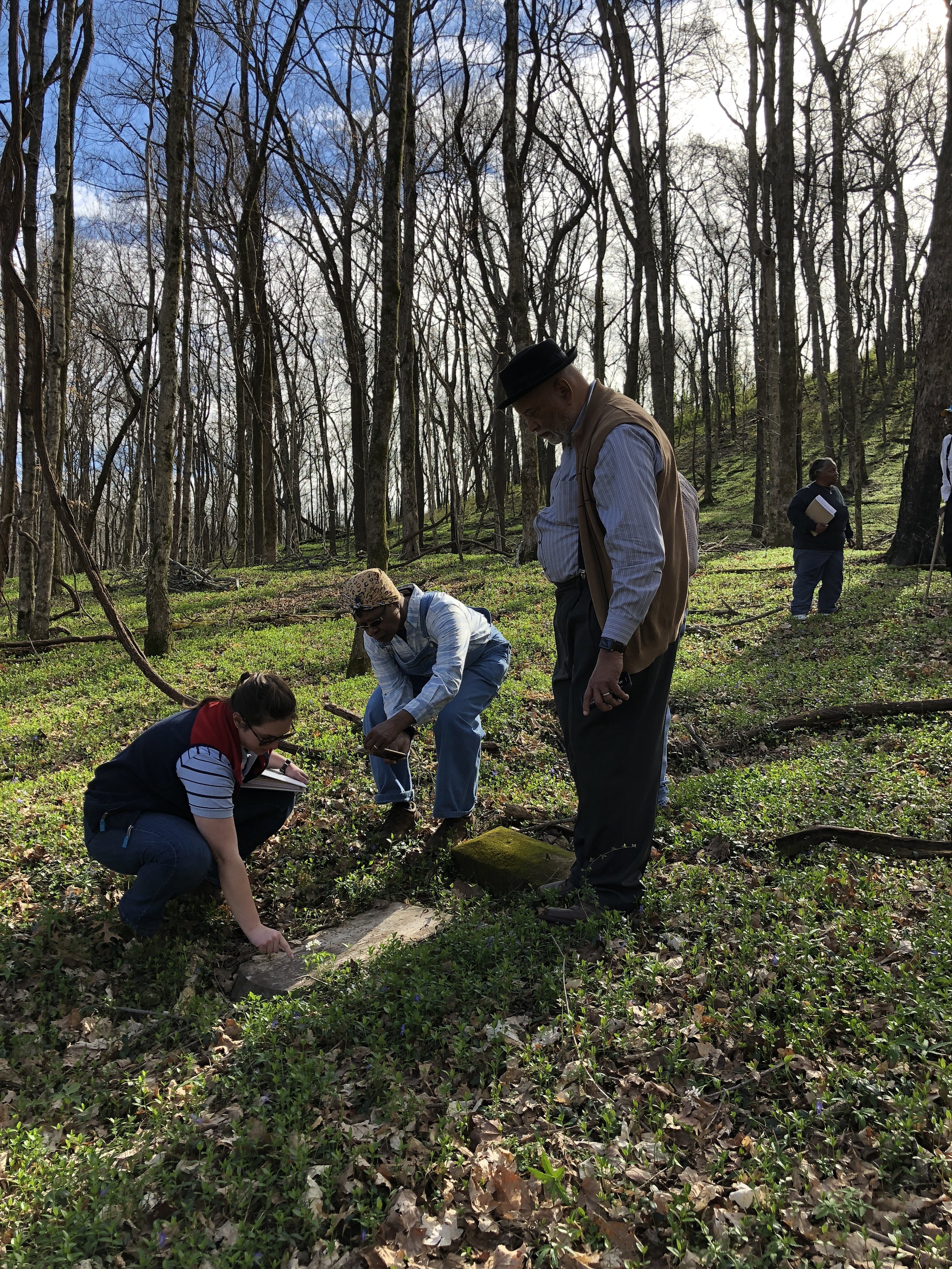Center Point Community
Center Point tells a story of a thriving African American community located near present-day Wolf Gap in Pulaski, Tennessee. From the 1870s through 1950s, residents of the rural community maintained a school, a church and two cemeteries. Today, Giles County residents aim to learn more about Center Point, honor its history and connect past to present.
Kelly Hamlin, executive director of Wolf Gap, is one of the researchers uncovering the rich history of this community.
“Center Point was a historic African American farming community,” Hamlin said.
Center Point’s residents may be long gone, but its legacy lives on.
“It was a thriving rural farming community with predominantly African American landowners from the 1870s, just after the Civil War, through the 1950s,” Hamlin said. “There were so many communities like this in the South that were formed by people who came out of slavery, people who had been part of the US Colored Troops during the Civil War and who made new life for themselves in these new communities. And then, like in so many of these places, folks moved away. A couple of generations later, by the 1950s, many people had moved North.”
Part of the Great Migration, Center Point’s residents had sold their land and moved out of the South.
Today, Giles County residents treasure Center Point’s past, piecing its history together to learn from it and honor its memory. The project is funded through a grant from Humanities Tennessee.
“We have done research and are still doing research on who was there,” Hamlin said. “Now, we are excited to be able to do more research and record oral histories with some of the descendants, digitize family photographs and bring descendants together for a homecoming event. This is history, of course, but it is still new and breaking news because we are learning more about it every day.”
Hamlin began researching Center Point in 2016.
“A local landowner stumbled upon a cemetery on his property and connected with us to help research it,” Hamlin said. “That was the first time we ever heard about Center Point. As we visited the cemetery, learned more about it and researched the folks who were there, we realized that it was known as Old Center Point Cemetery, and it was not in any historic lists of cemeteries. We found records of Old Center Point Cemetery burials from 90 and 100 years ago. We were able to inventory that there were about 140 people buried in the cemetery. It probably started as a burial ground for enslaved people and many of these graves are unmarked.”
Some of the graves were marked, helping researchers identify several of the people buried there.
“Research has given us a list of about two dozen people who were buried there, and we know their names,” Hamlin said.
While the research started with the cemetery, it has offered a glimpse into the lives of Center Point’s residents.
“We have been able to broaden the research and learn about the community the cemetery was a part of,” Hamlin said. “So we have about 60 people whose names we know. They were a part of Center Point community and are either buried in the cemetery or have family members buried there. They attended church or school at Center Point Missionary Baptist Church, which is the building that is still standing and is part of research and preservation.”
Researchers used census records and other historical records to piece together parts of the community, said Hamlin.
“We have a core group of seven people, who are still in Giles County and know they are connected to Center Point,” Hamlin said. “These are the people we are starting to do research with, doing oral histories.”
Through this core group, researchers try to reach other descendants and collect more family histories, as many of these families have moved out of Tennessee, according to Hamlin.
The church, which is still standing today, embodies the power of Center Point’s legacy.
“Center Point Missionary Baptist Church was founded in the 1870s,” Hamlin said. “Like so many rural Black churches, it also served as a school. It was a school for students during the week, and on Sundays, it was a church. At times, it also served as a fraternal lodge, so there was a fraternal organization that met there. We know that from the 1870s through the 1970s, it was the center of activities for Center Point. That’s where people sent children to school and where they went on Sundays.”
Teachers at Center Point School included James Bass, Ida Bell McNairy, Emma Lee Gilbert and Martha Sims. The school had an active Parent-Teacher Association, raising funds for class photos, playground equipment and landscaping on the school grounds. Center Point School continued serving as a school until 1952-1953 school year, when it merged with Indian Creek School.
The current building is the fourth structure serving as a church, according to Hamlin.
“The building there now is the fourth building on the same spot,” she said. “There were little, one-room churches all over the South that were such a big part of people’s lives and experiences in those years – after the Civil War, years of Jim Crow, and years of coming into the era of the Great Migration when people moved away. The building is still standing, still there, hasn’t been bulldozed, hasn’t caught fire.”
This is an opportunity, said Hamlin.
“If we can seize this moment and preserve the building and the stories of people who went to school or church there and grew up hearing about this community, there’s an opportunity for it to be a very unique place,” Hamlin said. “It is important to preserve it – it's not a mansion, it’s not a cathedral, but it was a part of many people’s lives, a huge part of their lives. Many of the people in Center Point had been in US Colored Troops. They came out of slavery and joined the army and had a unique experience during the war. They came out of the war and just wanted to make life for themselves and their families and became property owners in this community.”
Some of them farmed. Some were blacksmiths. Some were sharecroppers and didn’t own property.
“It's fundamentally important we tell these stories, stories that haven’t been told before,” Hamlin said.
One of the exhibits at Wolf Gap highlights Center Point and its rich history. Wolf Gap is located at 2718 Tarpley Shop Rd., Pulaski, Tennessee.


